Sambal oelek is a spicy chili sauce that is popular in Indonesian and Malaysian cuisine. The main ingredients are hot chili peppers and salt, although lemon, garlic or vinegar are also commonly added. If you can’t get your hands on a bottle of this hot sauce then you’re going to need a sambal oelek substitute that’s readily available on the supermarket shelf. Thankfully, this sauce is quite easy to replace, and we’ve compiled a list below of recommended options.
What can I use as a substitute for sambal oelek?
If you need to replace sambal oelek in a recipe then the best options are sriracha, gochujang, or crushed red chili flakes. They won’t perfectly mimic the original sauce but unless you’re an experienced sambal user, you’d hardly notice a change has been made. At a pinch, harissa paste can also be used or, if you have the time, try making your own sambal oelek. Check out the recipe at the bottom of the page if you’re interested.
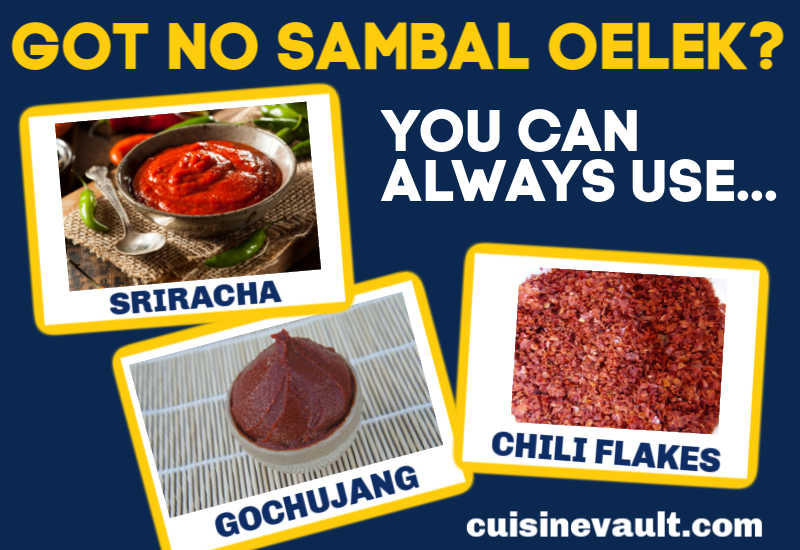
The best choice alternative will depend on how you intend using it in your cooking. Let's take a closer look at how each option is best used.
1. Sriracha
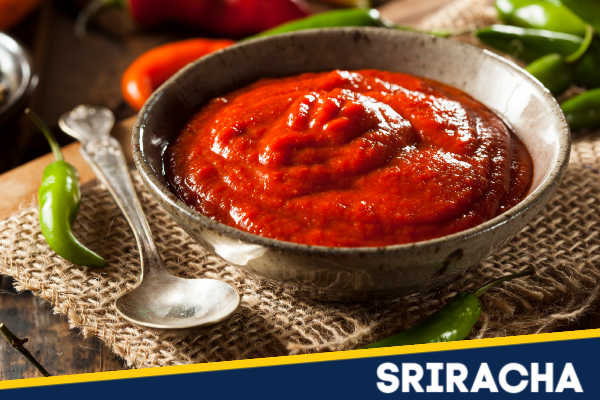
Practically every supermarket in the United States has Sriracha chili sauce on its shelves. Its vibrant red color and heat make it suitable for use in any recipe that calls for sambal oelek.
There are subtle differences between the two. Sriracha is a chili garlic sauce with a sweet undertone, which you won’t find in sambal oelek. This isn’t a deal-breaker, and you can make adjustments to your recipe. Increase the saltiness with some fish sauce or reduce the garlic if there is any in the recipe. Unless you’re cooking for a local Indonesian family, changing the sauce will go unnoticed by most.
2. Gochujang
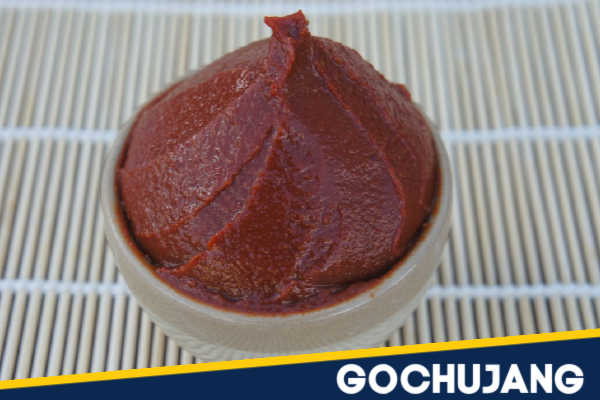
Gochujang is becoming more popular on Western supermarket shelves and it is easy to find at an Asian grocer. This condiment has a texture similar to tomato paste, so it can easily be incorporated into a stirfry to replace sambal oelek. Gochujang is delicious added to burger patties and it adds a punchy element when used as part of a meat marinade.
Gochujang provides a unique combination of flavors, as it has been manufactured using a fermentation process. This adds a layer of sour acidity as well as umami flavor. A little gochujang can go a long way, so add half the amount of sambal oelek and taste test before adding more.
3. Crushed red pepper flakes
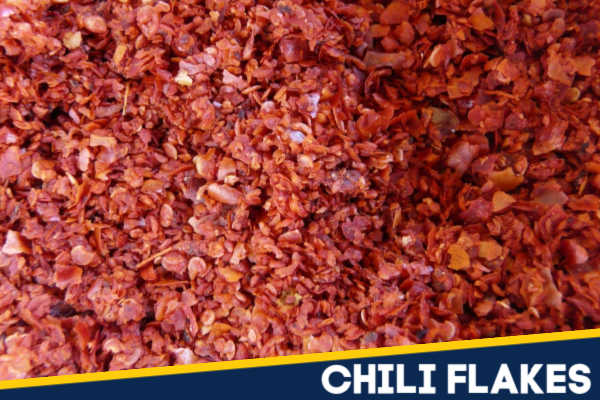
Red pepper flakes are a useful alternative if you are okay with adding heat to your dish without the consistency that a sauce offers. Rather than a sauce, this ingredient is a dry spice that is made from crushing red chili peppers.
A useful feature of sambal oelek is that it binds the vegetables and meat that are added to a noodle dish into a silky texture. If you choose to use chili flakes, then add some other liquid such as fish sauce or oyster sauce.
4. Harissa
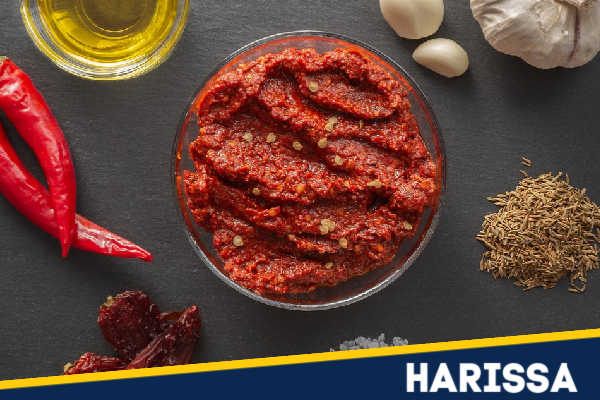
Harissa is a hot chili paste originating from North Africa. Although its main ingredient is chili, it also includes additional spices like garlic, caraway seeds, and cumin. These flavors will still incorporate nicely into many Asian savory recipes. Harissa also works well as a meat rub applied to beef, lamb, pork, or poultry. As with gochujang, you’ll want to add small amounts and then taste test before adding more.
5. Homemade sambal oelek
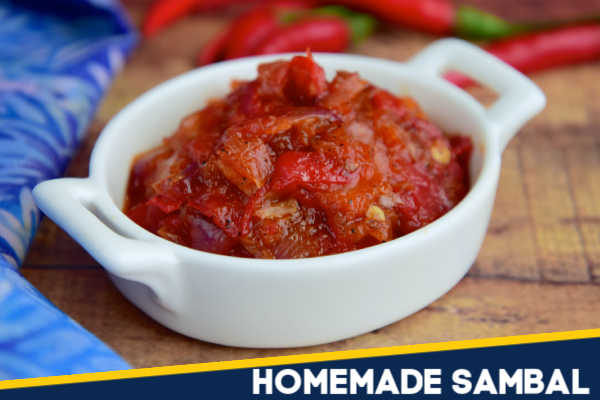
Making sambal oelek at home is quick and easy. Combine one pound of Thai chili peppers with ¼ cup of vinegar and a liberal sprinkle of salt. Blend in a food processor until combined, then scoop into a saucepan and bring to a boil on medium heat. Simmer for 3 minutes, and your sauce is ready.
This has to be one of the easiest sauces you can make, and it’s perfect for use in Asian cuisine. For some variety, include two cloves of crushed garlic to your sauce.
How is sambal oelek used in cooking?
Indonesians and Malaysians love using sambal oelek in stirfries at the end of cooking. It offers a fiery bite of flavor. Sambal oelek also makes an excellent condiment; slap it onto fish, meat, or any noodle dish to give the food an authentic taste of Southeast Asia.
Its use is starting to pop up in Western recipes for adding extra spiciness. Chicken wings, pizza, and burgers all benefit from a spoonful of sambal oelek. Be warned though, unless you like food “volcano lava hot”, don’t add too much.
Recommended reading:
Hoisin sauce vs oyster sauce - what is the difference?
How to save salty gravy - 5 hacks.
What is the best substitute for belacan?
Discover the difference between ssamjang and gochujang.
What is a good ketjap manis replacement?
Summing Up
Are you cooking a spicy Indonesian or Malaysian dinner tonight? If you’re looking for a substitute for sambal oelek, then your best options are sriracha, gochujang, red pepper flakes, or harissa. All these foods will provide the necessary heat without bringing too many other unwanted flavors to the table.
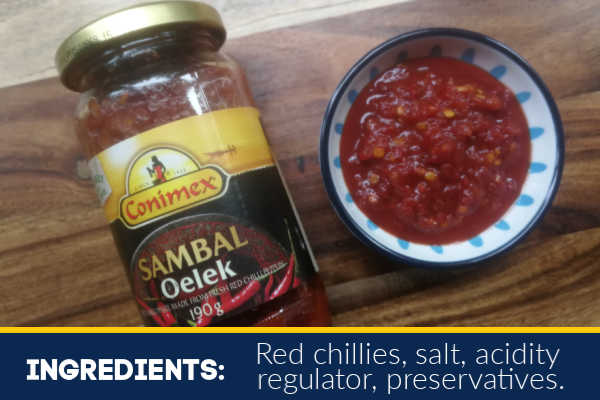
Each alternative mentioned above has a unique texture. While sambal oelek has chunky bits and chili seeds, gochujang and harissa are more like a paste, and sriracha has a shiny sauce texture. If you prefer a less spicy sauce then you may want to try yakisoba sauce or one of its substitutes. Tabasco is useful if you want a hot and spicy option with more acidic vinegary flavor.
Have you got a useful sambal oelek alternative which you use in cooking? Let us know in the comments below.

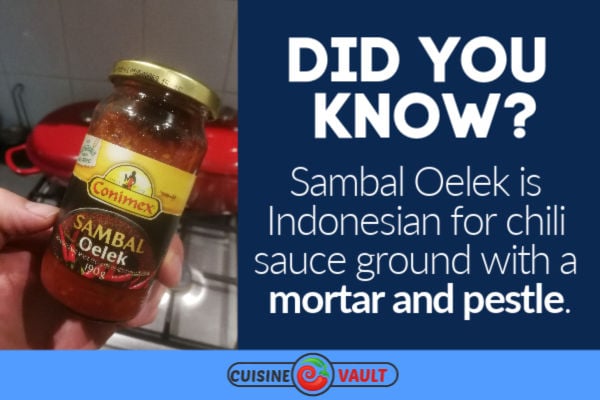
Leave a Reply